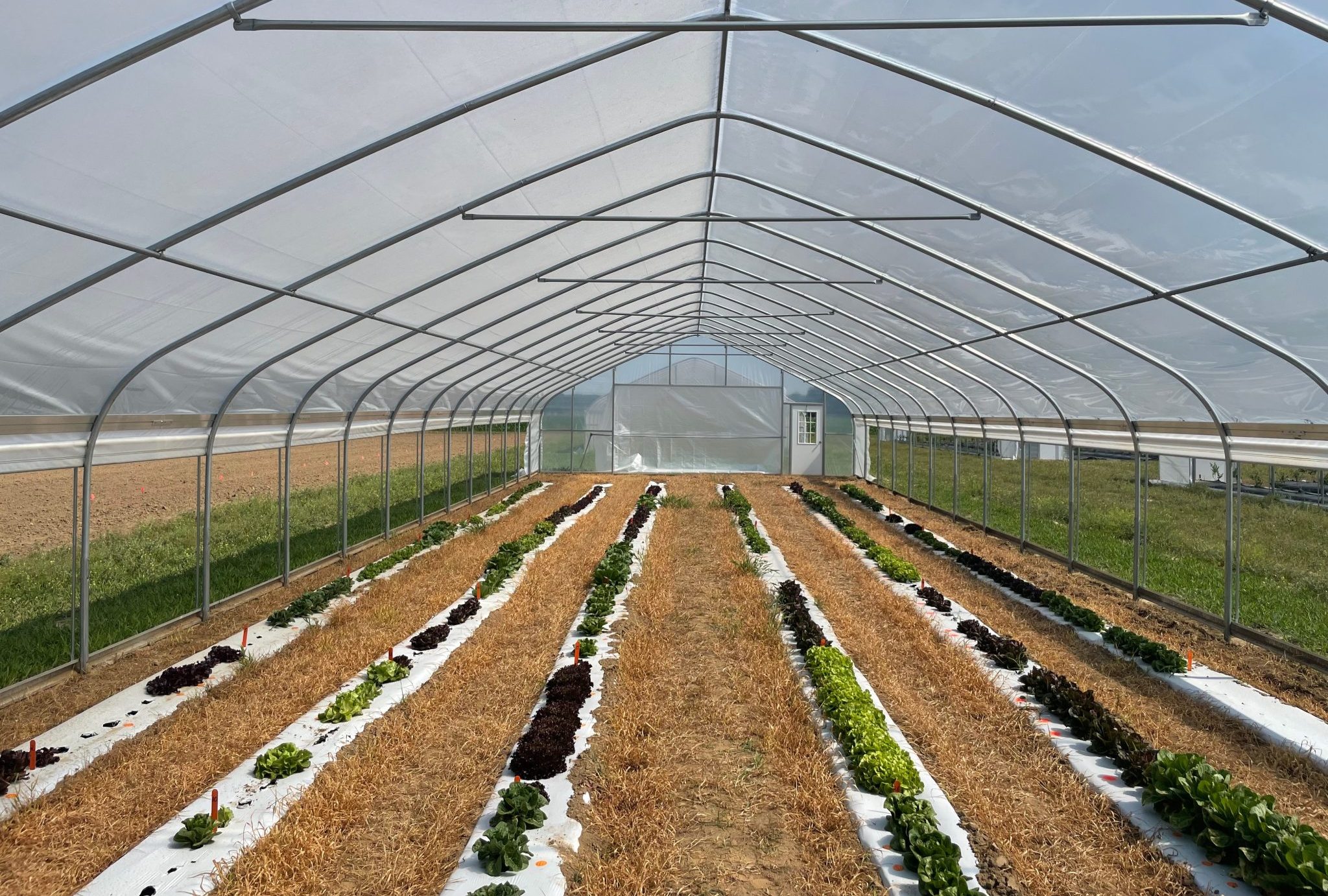Crop Production

In an ongoing effort to provide science-based answers to production- related issues, cultivar variety trials were conducted to support the vegetable industry in Alabama. Recent evaluations resulted in guidelines for lettuce cultivar selection in high tunnel production systems.
In spring 2022, 16 lettuce cultivars were evaluated at Auburn University’s E. V. Smith Research and Extension Center. Cultivars were evaluated in a high tunnel production system using conventional production practices.
The following production practices were used:
- Planting date: Seeds were planted in 200-cell trays filled with soilless media on March 15, 2022, and greenhouse grown until transplanting.
- Transplanting date: April 12, 2022
- Row-spacing: narrow beds (18-inches wide) at 6-feet center to center
Note: Narrow beds are common in high tunnel systems, but using narrow beds requires a narrow plastic layer and plastic film. The narrow plastic layer and film are 4 feet wide.
- In-row plant spacing: 9 inches
- Plant population: 640 plants/high tunnel
Note: the population used in this trial is considered low; a grower can maximize the production area by increasing the number of rows in the tunnel or by increasing the bed size (36 inches wide) and planting double rows in a bed.
- Irrigation: Irrigation water was applied using a drip system installed under white plastic mulching. Irrigation events supplied approximately 1 to 1.5 inches of water per week.
- Fertilizer: Approximately 500 pounds/acre of 10-10-10 fertilizer was applied preplant using a fertilizer spreader (50 pounds of nitrogen/acre) before laying plastic mulch. A week after transplanting, plants were fertilized once a week until harvest through drip irrigation with 15 pounds of nitrogen/week/acre using 20-20-20 (60 pounds of nitrogen/acre).
- Pest management: Crop management practices for disease, insect, and weed control followed recommendations of the Alabama Cooperative Extension System or the “Southeastern US Vegetable Crop Handbook.”
- Harvest date: May 18, 2022 (64 days after planting)
- Data collection: At harvest, lettuce heads were cut at the base of the plant, and lettuce weight was recorded for calculation of total yield (pounds/acre). Lettuce head diameter (inch) and height (inch) were also recorded from five marketable heads. All data was used for statistical analysis and cultivar comparison within each system. Statistical analysis was performed using the RStudio software using Fisher’s Least Significant Difference Test with a p-value of 0.05.
Results
Lettuce head weight was the highest for the cultivar Blue Rock (0.71 pound/head or 11.4 ounces/head) and lowest for cultivars Truchas (0.29 pound/head or 4.6 ounces/ head) and Salanova Red Butter (0.26 pound/head or 4.2 ounces/head). Truchas is a mini-romaine type lettuce, so a small head weight is not unexpected. Head diameter was the largest for the Coastal Star cultivar (12.7 inches) and the lowest for Salanova Red Butter (7.8 inches).
Cultivar Blue Rock (10.1 inches) and Coastal Start (9.1 inches) had the highest head height, while cultivar Bauer (5.2 inches), Salanova Green Butter (5.2 inches), and Salanova Red Butter (5.2 inches) had the lowest head height.
Overall, all lettuce cultivars performed well during the growing season. Head weight is directly related to head diameter and height. Larger heads are heavier; growers selling lettuce under contracts (weight based) should select cultivars with larger heads. In contrast, growers selling lettuce per unit (head based) should choose cultivars according to consumer demand.
Table 1. Lettuce Head Weight, Diameter, and Height According to Cultivar
* Values followed by similar letters within a column indicate no significant difference among varieties, according to Fisher’s Least Significant Difference Test mean test.
| Cultivar | Head Weight (pound) | Head Diameter (inch) | Head Height (inch) |
|---|---|---|---|
| Blue Rock | 0.71 a* | 12.5 ab | 10.1 a |
| Dragoon | 0.60 ab | 9.0 defg | 6.8 bcde |
| Panisse | 0.56 abc | 11.0 bc | 6.5 cde |
| Newham | 0.55 abcd | 8.7 defg | 6.3 cdef |
| Coastal Star | 0.54 abcd | 12.7 a | 9.1 a |
| Breen | 0.53 abcde | 9.1 defg | 7.8 b |
| Milagro | 0.52 abcde | 10.1 cd | 5.7 ef |
| Grazion | 0.49 bcdef | 12.5 ab | 7.2 bc |
| Rosaine | 0.41 bcdefg | 8.5 defg | 5.7 ef |
| Bauer | 0.41 bcdefg | 8.8 defg | 5.2 f |
| Salanova Green Butter | 0.36 cdefg | 8.4 efg | 5.2 f |
| Monte Carlo | 0.36 defg | 9.8 cdef | 6.7 bcde |
| Ezflor | 0.34 efg | 9.8 cde | 6.1 cdef |
| Turchas | 0.33 efg | 8.2 fg | 7.0 bcd |
| Rouxai | 0.31 fg | 9.8 cde | 5.8 def |
| Truchas | 0.29 g | 8.5 efg | 6.1 cdef |
| Salanova Red Butter | 0.26 g | 7.8 g | 5.2 f |
Table 2. Lettuce Cultivars Evaluated During Spring 2022
| Cultivar | Lettuce Type | Lettuce Head |
|---|---|---|
| Panisse | Oakleaf | 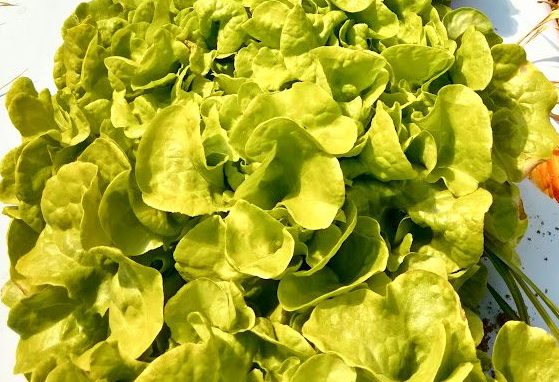 |
| Breen | Romaine | 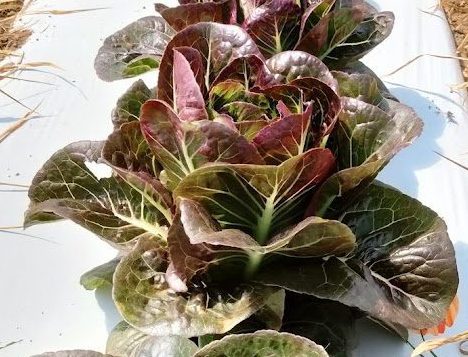 |
| Coastal Star | Romaine | 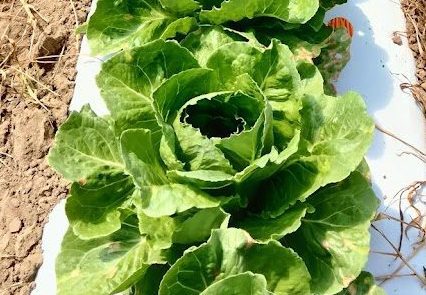 |
| Salanova Green Butter | Salanova | 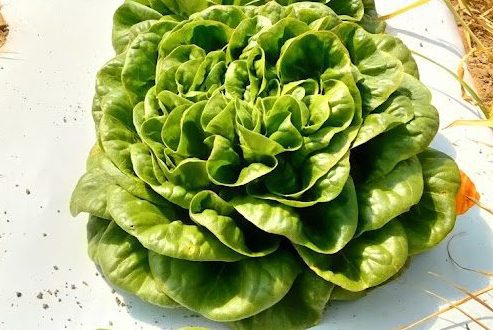 |
| Salanova Red Butter | Salanova | 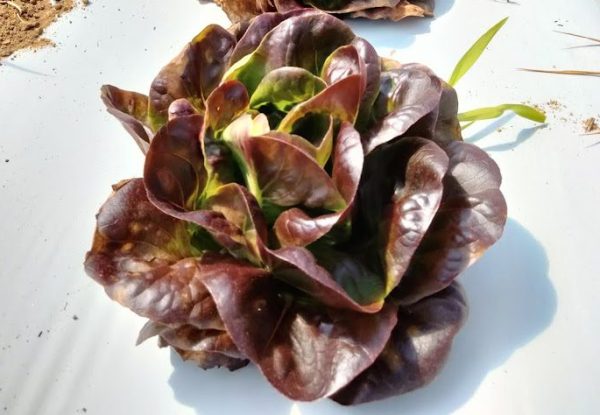 |
| Rouxai | Oakleaf | 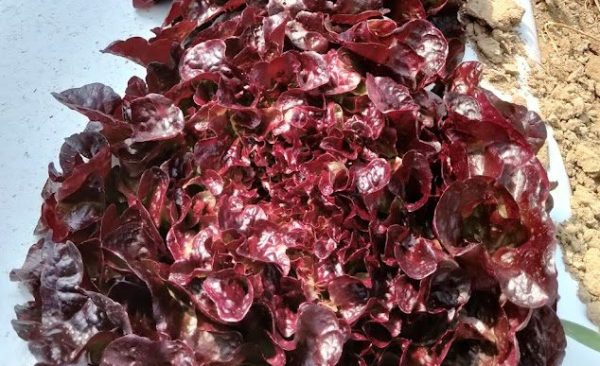 |
| Monte Carlo | Romaine | 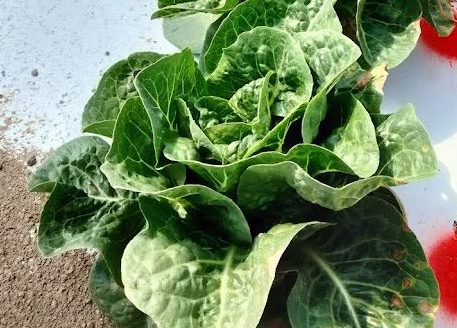 |
| Rosaine | Bibb | 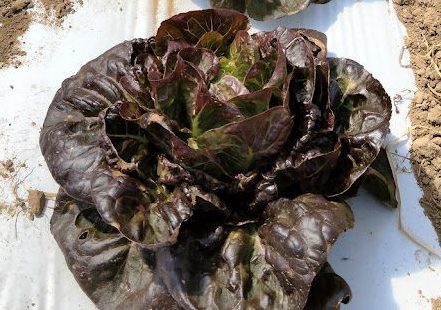 |
| Newham | Bibb | 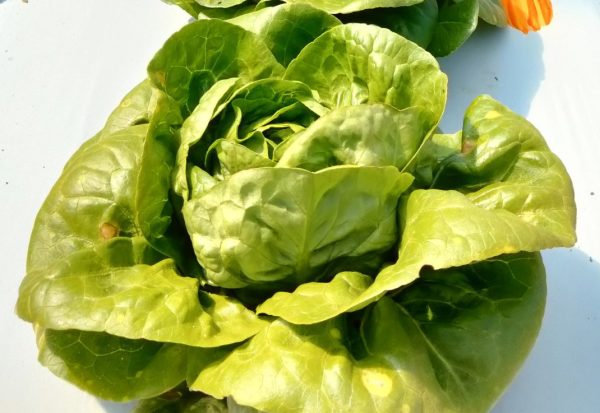 |
| Truchas | Romaine | 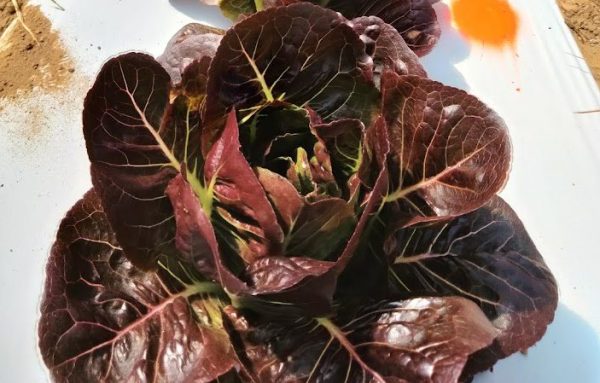 |
| Dragoon | Romaine | 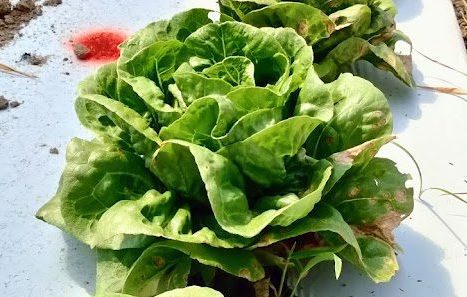 |
| Grazion | Oakleaf | 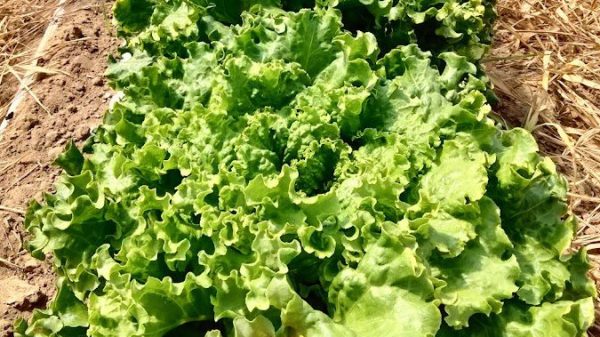 |
| Bauer | Oakleaf | 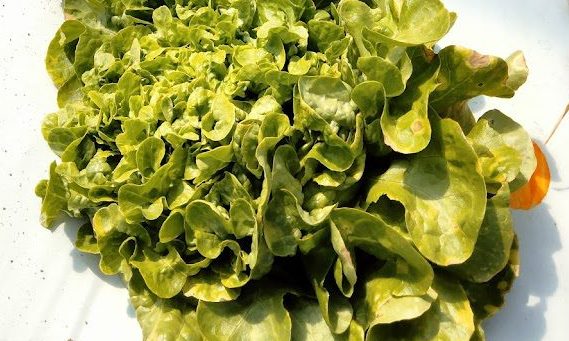 |
| Ezflor | One-Cut | 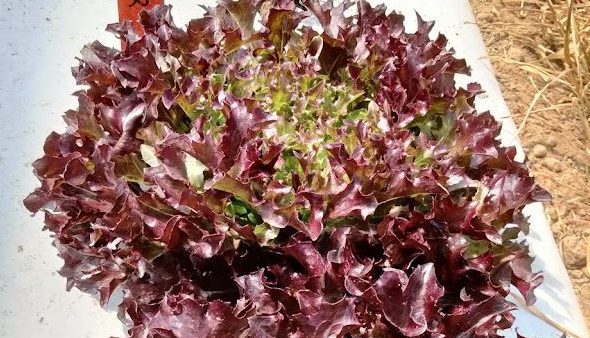 |
| Blue Rock | Romaine | 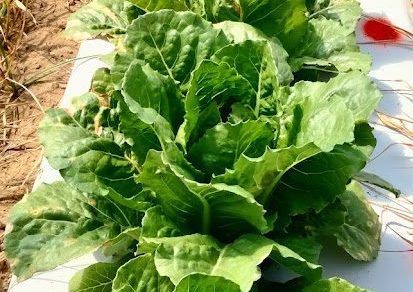 |
| Milagro | Butterhead | 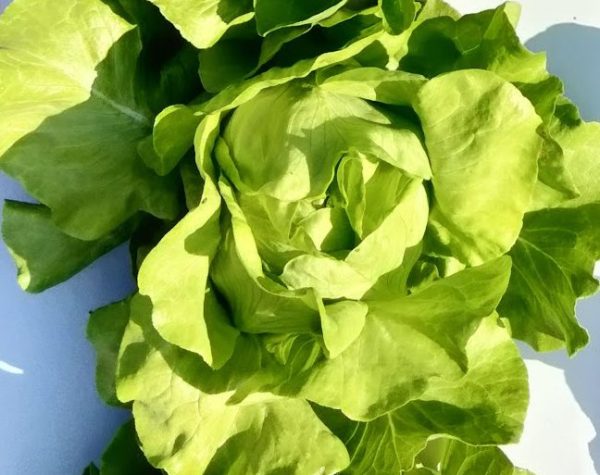 |
 Sthefani de Oliveira, Research Assistant; Raira Pelvine, Research Assistant; Camila Rodrigues, Extension Specialist, Assistant Professor; Chip East, Regional Extension Agent; and Andre da Silva, Extension Specialist, Assistant Professor, all in Horticulture with Auburn University
Sthefani de Oliveira, Research Assistant; Raira Pelvine, Research Assistant; Camila Rodrigues, Extension Specialist, Assistant Professor; Chip East, Regional Extension Agent; and Andre da Silva, Extension Specialist, Assistant Professor, all in Horticulture with Auburn University
New January 2023, Lettuce Cultivars for High Tunnel Systems, ANR-2953

